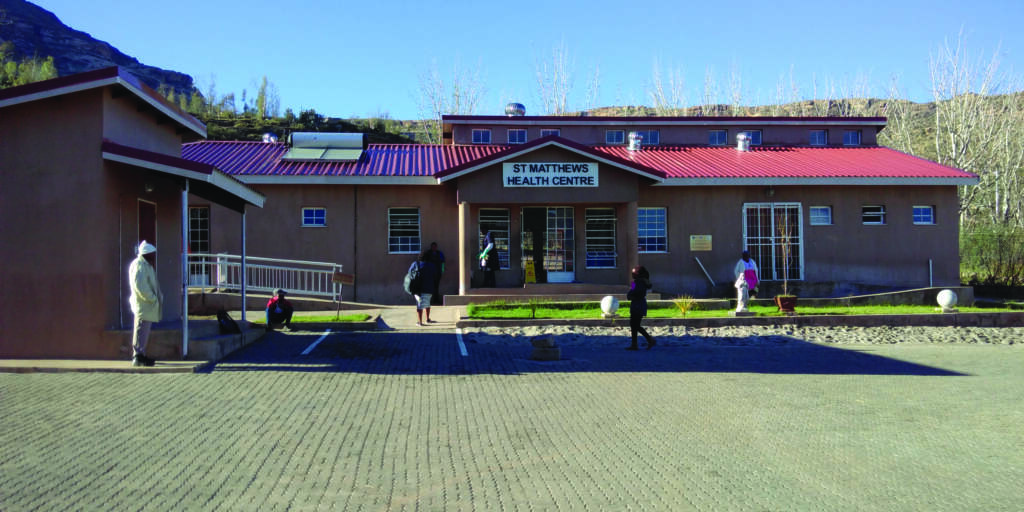… 92% of deliveries now assisted by skilled providers
Ntsoaki Motaung
In Lesotho, 85 percent of live births take place in a health facility, and ninety-two percent of deliveries are assisted by a skilled provider.
This is according to the Lesotho Demographic and Health Survey (LDHS) 2023–24 Key Indicators Report published recently.
The report also revealed that skilled assistance at delivery has increased in Lesotho over the past two decades.
“56 percent of deliveries had skilled assistance in the 2004 LDHS, as compared with 82 percent in 2014 and 92 percent in the 2023–24 LDHS,” it read.
Further, the report stated that a large proportion of maternal and neonatal deaths occur during the first 48 hours after delivery.
Thus, according to the report, prompt postnatal care (PNC) for both the mother and the child is important to treat any complications arising from the delivery, as well as to provide the mother with important information on how to care for herself and her child.
It read: “Safe motherhood programmes recommend that all women receive a check of their health during the first two days after delivery.”
The survey also found that 79 percent of mothers received a postnatal check during the first two days after birth for their most recent live birth in the two years preceding the survey.
The percentage of mothers receiving a postnatal check during the first two days after birth has increased substantially from 44 percent in the 2009 LDHS to 79 percent in the 2023-24 LDHS.
The report further revealed that in the five-year period before the 2023–24 LDHS, the neonatal mortality rate was 26 deaths per 1,000 live births, the infant mortality rate was higher, at 39 deaths per 1,000 live births, and the under-five mortality rate was 54 deaths per 1,000 live births.
“This means that about one of every 19 children die before their fifth birthday,” it read.
It indicated that under-five mortality increased from 113 to 117 deaths per 1,000 live births between the 2004 LDHS and the 2009 LDHS before decreasing sharply to 54 deaths per 1,000 live births in the 2023–24 LDHS.
Infant mortality was 91 deaths per 1,000 live births in both the 2004 and 2009 LDHS surveys before dropping to 39 deaths per 1,000 live births in the 2023–24 LDHS. Neonatal mortality has also decreased over time, from 46 deaths per 1,000 live births in the 2004 LDHS to 26 deaths per 1,000 live births in the 2023–24 LDHS.
The 2023–24 LDHS was implemented by the Ministry of Health. Data collection took place from November 27, 2023 to February 29, 2024.
ICF provided technical assistance through the Demographic and Health Surveys Program (DHS), which is funded by the United States Agency for International Development (USAID) and offers financial support and technical assistance for population and health surveys in countries worldwide.
Other agencies and organisations that facilitated the successful implementation of the survey through technical or financial support were the Millennium Challenge Corporation (MCC), the World Bank Group, the United Nations Children’s Fund (UNICEF), the Joint United Nations Programme on HIV/AIDS (UNAIDS), the United Nations Population Fund (UNFPA), the Global Fund, and GAVI.
This Key Indicators Report presents a first look at selected findings from the 2023–24 LDHS.
A comprehensive analysis of the data will be presented in a final report in 2025.
The primary objective of the 2023–24 LDHS is to provide up-to-date estimates of basic demographic and health indicators.
Specifically, the LDHS collected information on fertility levels, marriage, sexual activity, fertility preferences, awareness and use of family planning methods, breastfeeding practices, nutrition, childhood and maternal mortality, maternal and child health, awareness and behaviour regarding HIV and AIDS and other sexually transmitted infections (STIs), other health issues (including tuberculosis) and chronic diseases, adult mortality (including maternal mortality), mental health and wellbeing, and gender-based violence.
In addition, the 2023–24 LDHS provides estimates of anaemia prevalence among children age 6–59 months and adults as well as estimates of hypertension and diabetes among adults.
These estimates are not included in the key indicators report but will be presented in the final report. The 2023–24 LDHS is a follow-up to the 2004, 2009, and 2014 LDHS surveys.
’Maneo Moliehi Ntene, Principal Secretary (PS), Ministry of Health, said the key indicators report represents a cornerstone of the government’s ongoing commitment to understanding and addressing the health and demographic needs of the people of Lesotho.
Ntene said the findings presented in the report highlight both the progress the government has made and the challenges that remain.
“Notably, improvements in key health indicators reflect the positive impact of national health initiatives and policies. However, the data also underscore persistent issues that require sustained attention and action,” she said.
She mentioned that addressing these challenges was crucial to achieving the national health goals and ensuring a healthier future for all Basotho.
“This report serves not only as a benchmark of our current health and demographic landscape but also as a call to action. Policymakers, health professionals, researchers, and all stakeholders are urged to use these insights to drive forward initiatives that will enhance health outcomes, reduce inequalities, and promote sustainable development,” Ntene concluded.
Summary
- Thus, according to the report, prompt postnatal care (PNC) for both the mother and the child is important to treat any complications arising from the delivery, as well as to provide the mother with important information on how to care for herself and her child.
- The report further revealed that in the five-year period before the 2023–24 LDHS, the neonatal mortality rate was 26 deaths per 1,000 live births, the infant mortality rate was higher, at 39 deaths per 1,000 live births, and the under-five mortality rate was 54 deaths per 1,000 live births.
- Other agencies and organisations that facilitated the successful implementation of the survey through technical or financial support were the Millennium Challenge Corporation (MCC), the World Bank Group, the United Nations Children’s Fund (UNICEF), the Joint United Nations Programme on HIV/AIDS (UNAIDS), the United Nations Population Fund (UNFPA), the Global Fund, and GAVI.

Your Trusted Source for News and Insights in Lesotho!
At Newsday Media, we are passionate about delivering accurate, timely, and engaging news and multimedia content to our diverse audience. Founded with the vision of revolutionizing the media landscape in Lesotho, we have grown into a leading hybrid media company that blends traditional journalism with innovative digital platforms.




